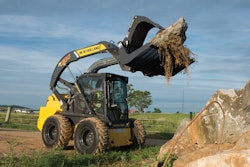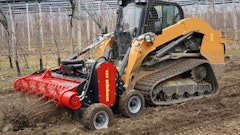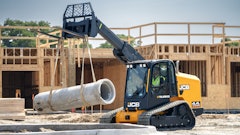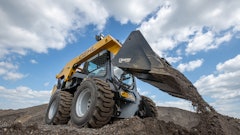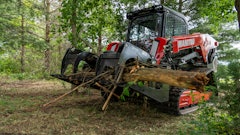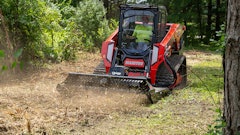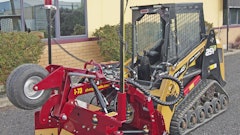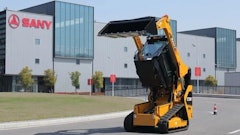![[Video] New Holland Construction Celebrates Its 250,000th Skid-steer Loader](https://img.forconstructionpros.com/files/base/acbm/fcp/image/2017/01/default.588b674a13378.png?auto=format%2Ccompress&q=70&w=400)
New Holland Construction has manufactured its 250,000th skid-steer loader to date. The company began skid steer manufacturing 45 years ago in its facility in Grand Island, NE. Skid-steer manufacturing eventually moved to Bellville, PA, and finally to a plant in Wichita, KS in 2002, where it is today.
The L35, New Holland’s first skid-steer loader, pioneered the use of a longer wheelbase for a smooth, steady ride for operator comfort and safety. The company also introduced ROPS/FOPS and boom lockouts for operator safety. Up until that safety innovation, all skid steers were open-top designs, preventing the operator from being protected from falling material, loader arm pinch points, or machine rollover.
Developments from other New Holland products found their way to the L35; the hydrostatic drive system from a self-propelled windrower was incorporated into the L35, another industry first. These attributes are found in the current line-up of New Holland skid steers and all of these traits have been adopted by other manufacturers.
In addition to this manufacturing achievement, New Holland Construction marks the 45-year anniversary of its patented Super Boom loader, a technology designed by engineer Larry Halls in 1960, whose project was to design a drive linkage for a mower that did not require a pitman arm. Halls devised a four bar link system which became patented and evolved into the Super Boom.
The skid steer milestones follows the recent announcement recognizing the Wichita, KS, manufacturing plant as a recipient of the Silver Level World Class Manufacturing (WCM) certification for the manufacturing of skid-steer and compact track loaders. WCM is one of the global manufacturing industry’s highest standards for the integrated management of manufacturing plants and processes. It is a pillar-structured system based on continuous improvement, designed to eliminate waste and loss from the production process by identifying objectives such as zero injuries, zero defects, zero breakdowns, and zero waste. Determining factors for this latest achievement were due to a series of category improvements including Professional Maintenance, Level of Detail, and Motivation of Operators.



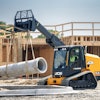
![[Video] New Holland Construction Celebrates Its 250,000th Skid-steer Loader](https://img.forconstructionpros.com/files/base/acbm/fcp/image/2017/01/default.588b674a13378.png?auto=format%2Ccompress&fit=crop&h=167&q=70&w=250)
